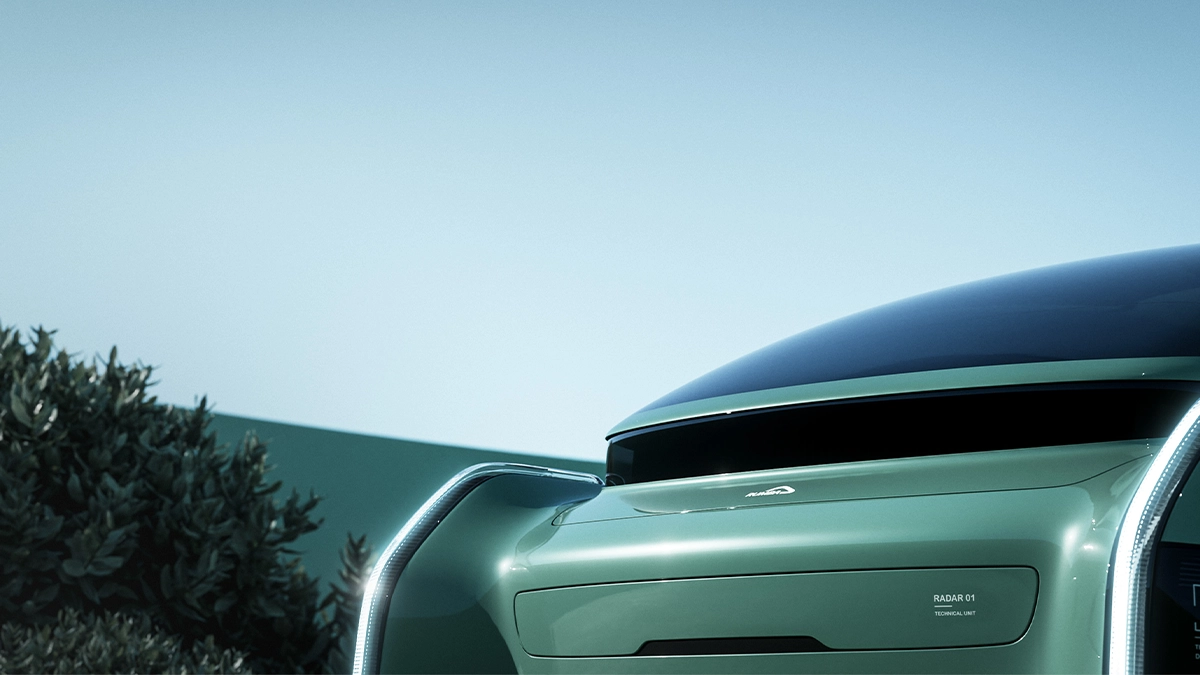The RUMBA research project is funded by the federal ministry for economic affairs and climate action. Renowned project partners such as Audi AG, Bosch GmbH and the University of Stuttgart are working closely together on the project. In close cooperation, the studiokurbos design team creates a virtual vehicle that consistently harmonizes the autonomous driving experience with user needs. Following the holistic design approach, the international design studio immediately turns the research project into a complete, virtual show car. It thus makes it possible to experience the latest findings from the complex development with all senses.

Objectives of the Rumba Research Project
Autonomous driving is currently on everyone's lips. But what does this new autonomy mean for the driving experience of drivers and passengers? Of course, it will be up to the driver to decide how much responsibility the vehicle should assume. And of course, it will need some time before we see fully autonomous vehicles on the road. Nevertheless, it is essential to start thinking today about the mobility of the day after tomorrow.

The RUMBA research project aims to completely redesign the interior as well as the driving experience for the vehicle occupants during fully automated driving. And this is from the three perspectives of research, technology and design.
The Exterior Design - Consistent continuation of the driving experience
The vehicle's uncompromising one-box design emphasizes the focus on the passengers. A long wheelbase and short overhangs characterize the proportions and make the design timeless and realistic. The desire for privacy from the interior concept is taken up by an extremely raised colour gradient from the side into the window areas. The unobstructed view from inside to outside remains unaffected.
The sensors - an essential component of autonomous driving - are visually highlighted and effectively staged. Graphically designed areas in black on the front, next to the front wheel, in the rear, and on the roof, create a strikingly futuristic expression.
Interior Design - Focusing on people and their needs
Autonomous driving creates completely new design options for how the interior, in particular, can be used. Thus this vehicle was designed from the inside out. The focus is on people with their needs and their impact on the driving experience in different situations. The design team has defined 3 modes for the seat layout, in which the occupants are located depending on the level of automation and need:
- The Drive Mode:
The driver drives himself; all seats are facing the direction of travel. - Social space mode:
The vehicle drives fully autonomously. The front seats turn toward the rear passengers. This promotes communication and interaction among all occupants while driving. - Cocoon mode:
Should the occupants feel the need to withdraw and switch off during autonomous driving, the seats can be turned away from each other. A "Privacy Shield" extends from the headrest to provide additional privacy.
The entire interior was developed in close collaboration between the interior designers and the UI/UX design colleagues. The aim was to achieve a design that was as purist as possible to not distract from the novel spatial effect. The central functional element is the so-called "loop" - a circulating, horizontal band connecting several functions simultaneously. It is not only a display and control element, but also a communication tool that allows all occupants to interact with each other. Individual lighting moods can also be effectively created via the loop, ensuring a unique atmosphere. A table between the rear seats can be folded out if required and, in turn, promotes communication among the passengers.
Statement from Andreas Kurbos: Founder & CEO, studiokurbos
“The RUMBA research project is an exciting field for us at studiokurbos and a great complement to series projects. Together with our partners from science and industry, we are pushing boundaries and exploring how visionary project ideas for autonomous driving can be translated into concrete user experiences. Through our expertise in virtual reality, we help our project partners bring innovations to life and make safe decisions.”
All Project Partners:
Audi AG, MAN Truck & Bus SE, Robert Bosch GmbH, Robert Bosch Automotive Steering GmbH, CanControls GmbH, OHP GmbH, Spiegel Institut Mannheim GmbH, studiokurbos GmbH, Würzburger Institut für Verkehrswissenschaften GmbH, Hochschule der Medien Stuttgart, Universität Stuttgart, CARIAD SE.
Click here to learn more about the research project.
About studiokurbos
studiokurbos is an owner-managed and independent design studio based in Stuttgart and Shanghai. As an interdisciplinary design partner, they design global mobility, products, and user experiences for brands and markets.

Automotive design – In the field of automotive design, studiokurbos designs smart mobility of the future with all its attributes from ‘autonomous’ to ‘connected’ to ‘shared’. studiokurbos develops both interiors and exteriors that highlight the specific characteristics of their respective clients and thus strengthen the market position of their products.
Product design – Understanding, interaction, usability, and user experience are integral to any product design. Considering the lasting value and emotional connotation, we create a symbiosis between aesthetic form design and user-friendly function.
User experience design – The user experience design team at studiokurbos develops forward-looking interaction and operating concepts. These combine real and virtual worlds to create fascinating spatial experiences and user symbioses for products and automobiles.




















